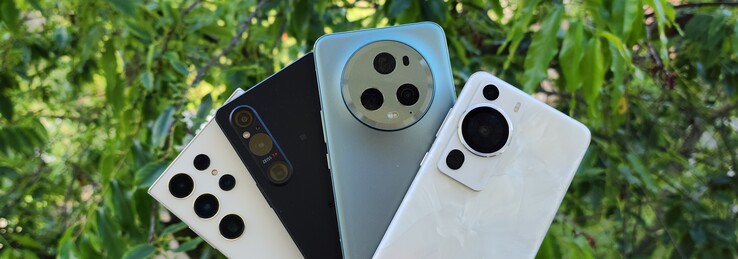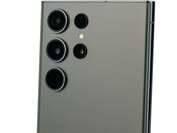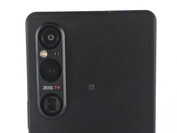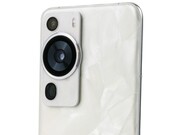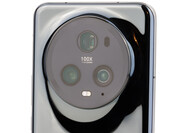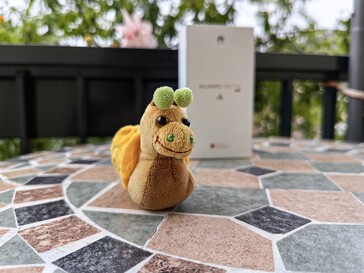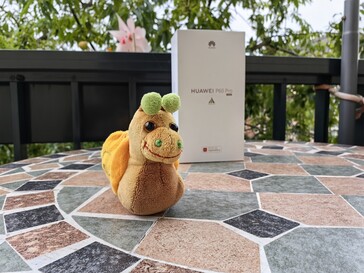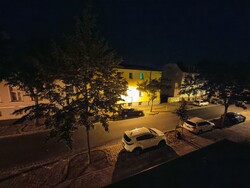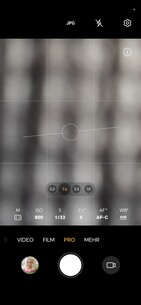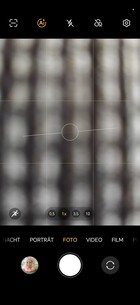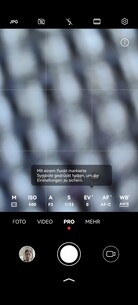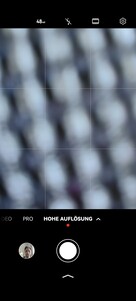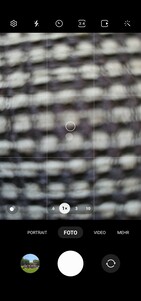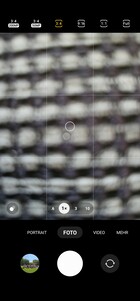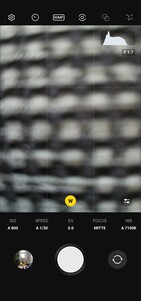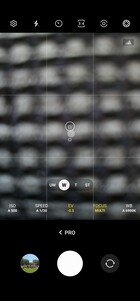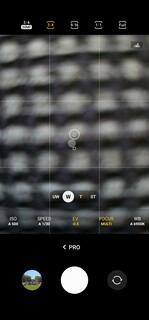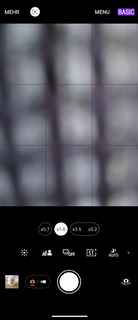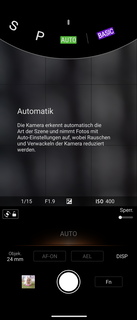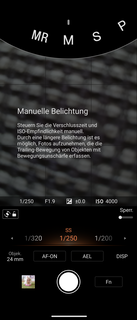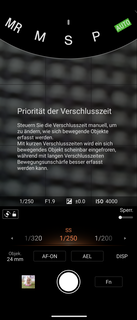The best camera smartphones of 2023 reviewed - Samsung makes progress, Sony redeems itself
In the last part of our review series about the camera quality on flagship smartphones released in the first half of 2023, it is time to compare the Huawei P60 Pro and Honor Magic5 Pro with the top dog - the Samsung Galaxy S23 Ultra. This comes in part after a recommendation to do so from our readers. We then decided on the Sony Xperia 1 V to complete this lineup. If you're interested in how other smartphones from this year performed, take a look at part 1 and part 2 of this series.
Now that the Galaxy S23 Ultra has received its long-awaited camera update, it will be interesting to see which improvements have been made to its 50-megapixel mode in everyday use, as well as whether the 200-MPix camera is now able to use its full potential. Although, the Samsung flagship faces quite a bit of camera competition from its Android rivals. The Huawei P60 Pro, for example, has an automatic aperture function which automatically chooses an aperture value between f/1.4 and f/4.0, and it also makes use of in-house RYYG sensor technology. The Xperia 1 V's new Exmor T sensor also offers some promising new tech in the shape of its new stacked method. The Sony flagship's camera sensor is supposedly able to offer better dynamics and less noise (especially in low-light conditions) through its separate layers for photodiode and phototransistor. And last but not least, the Honor Magic5 Pro's main camera has a comparatively large sensor area, meaning it is meant to enable great low-light photography.
Price-wise, all four flagship smartphones range around and over the $1,000 mark - although, Huawei and Honor have both managed to keep their prices a little lower, at around $1,200. The Galaxy S23 Utra and Xperia 1 V both have an MRSP of about $1,400.
| Samsung Galaxy S23 Ultra | Sony Xperia 1 V | Huawei P60 Pro | Honor Magic5 Pro | |
|---|---|---|---|---|
| Camera setup: Back | 200 MPix (f/1.7, OIS, 1/1.3” sensor ISOCELL HP2) | 48 MPix (f/1.9, OIS, 24 mm, IMX888, 1/1.35″) | 48 MPix (f/1.4-f/4.0, 25 mm, OIS, RYYB sensor) | 50 MPix (f/1.6, OIS, 1/1.12", IMX878) |
| Tele lens(es) | 10 MPix (f/2.4, 69 mm, OIS, 3x optical) + 10 MPix (f/4.9, 11°, 230 mm, OIS, 10x optical, 100x max) | 12 MPix (f/2.3-f/2.8,, OIS, 3,5 - 5,2x optical, 15,6x max) | 48 MPix (f/2.1, 90 mm, OIS, 3.5x optical, 100x max ) | 50 MPix (f/3.0, OIS, 3.5x optical, 100x max) |
| Ultra-wide angle | 12 MPix (f/2.2, 13 mm, 120°) | 12 MPix (f/2.2, 16 mm, 123°) | 13 MPix (f/2.2, 13 mm) | 50 MPix (f/2.0, 120°) |
| Camera setup: Front | 12 MPix (f/2.2, 25 mm) | 12 MPix (f/2.0, 24 mm) | 13 MPix (f/2.4) | 12 MPix (f/2.4) |
| Software version | S918BXXS3AWF7 | 67.0.A.1.122 | 13.1.0.153 | 7.1.0.151 |
Pixel binning, a process in which the side length of each individual pixel is mathematically enlarged, is used by all the flagship smartphones in this comparison. The Galaxy S23 Ultra uses its 200-MPix ISOCELL HP2 sensor to fuse up to 16 individual pixels together to one big monster pixel. Alternatively, the smartphone can also use a classic 4-to-1 binning technique - the same as on the Sony Xperia 1 V, Honor Magic5 Pro and the Huawei P60 Pro. Compared to the Samsung flagship, all the other phones have access to much larger native pixels.
For all of our photos, we let all of the smartphones use their full "intelligence" when it came to their camera software, meaning HDR and AI algorithms were activated in order to get the most out of each shot automatically. The images don't represent the standard resolution of each camera, instead, they are optimized to 12 MPix and 12.5 MPix images, and in the case of the Samsung Galaxy S23 Ultra, additionally to a 50 MPix image. On the Xperia 1 V, we utilized the mode which was already enabled straight out of the box called "basic".
Rear camera modules of the flagship phones in comparison
Please note: In order to better differentiate between all the comparison devices' image details, all image files are stored with the corresponding photos. To view these, simply click on the relevant image.
The flagship smartphones' main cameras
In daylight, the difference between all the different flagship smartphones lies in the details. While Huawei's P60 Pro depicts subjects as being quite heavily artificially sharpened, the Xperia 1 V's photos have a slightly softer and more natural feel. Especially on our image of the unicorn, Sony has found a nice compromise between sharpness and smoothing. All the other photos taken on the Xperia 1 V look great and have been captured authentically, too. However, this phone wouldn't be our first choice for portraits due to its issues with lighting.
The Huawei P60 Pro also has its weaknesses when it comes to lighting, but even so, it manages to deliver consistently good photos using its main camera. Especially on our window photo, the phone managed to capture the lighting well, while all the other comparison devices barely managed to depict the structure of the wall outside of the windowsill.
The Huawei P60 Pro relies on an automatic aperture control, which can adjust the aperture level manually or automatically between f/1.4 (left) and f/4.0 (right).
In daylight, the Galaxy S23 Ultra also takes great photos using its 200-MPix sensor, although, sometimes they can be a little grainy and lacking a little in detail. While the competition manages to depict individual cobblestones on our house image - in particular the Xperia 1 V and Magic5 Pro - users of the Samsung phone might have to make a bit of a compromise here. On that note, the Galaxy S23 Ultra actually delivered the worst result on the (admittedly very tricky) window picture, showing disappointing sharpness levels.
The Honor Magic5 Pro manages to find a good balance when it comes to image sharpness and its HDR photo mode is especially impressive. On the flip side, the Honor flagship struggles a little with its color depiction. Green tones look a little too loud and the image of the horse seems to depict rather inaccurate colors. When it comes to color accuracy, we much prefer the Galaxy S23 Ultra and - to a certain extent - the Huawei P60 Pro.
Samsung has taken a step in the right direction with regards to its 50-MPix mode after the release of its big June software update - which also included a variety of camera improvements. The phone's 4-to-1 pixel binning technology does still have a few issues, such as suboptimal lighting and poor dynamic range, but its high-resolution images are definitely much closer in quality to those of its "normal" 12.5-MPix photos.
Comparing the photos directly gives you a good idea of what advantages photos with an 8,160 x 6,120 pixel resolution have. Its computing process using 16 individual pixels results in considerably worse detail levels than the 50-MPix images. Unfortunately - even months after releasing its flagship - Samsung struggles to achieve a comparable photo processing quality using the pixel-binning method. At least in very good lighting conditions, it should be possible to achieve comparable HDR effects with software optimizations, despite its small native pixels.
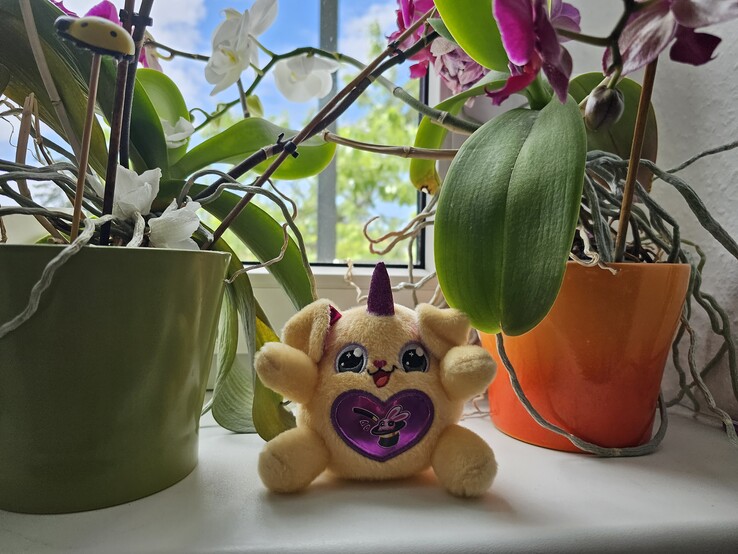
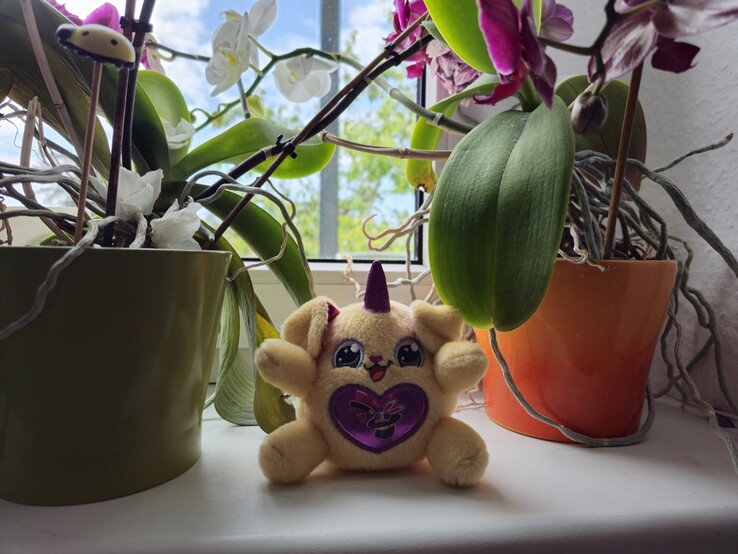
Pixel binning comparison during the day - Samsung Galaxy S23 Ultra: 50 MPix (right) vs. 12.5 MP (left)
Galaxy S23 Ultra in 12.5-MPix mode
Galaxy S23 Ultra in 50-MPix mode
In dark conditions, Galaxy S23 Ultra users should probably avoid using the 50-MPix mode - due to the ISOCELL HP2's small native pixels, the 16-to-1 pixel binning setting which is set as standard can really show its strengths in this discipline. The Samsung flagship delivers little grain, good lighting and lots of details. Lights - such as street lamps or neon signs - prove to be no problem for the Galaxy S23 Ultra, in stark contrast to the Xperia 1 V and the Huawei P60 Pro. The latter does, however, show overall better low-light qualities compared to the Sony flagship.
It has to be noted that in low lighting conditions, the Honor flagship sometimes struggles with visible color depiction deviations, although the smartphone is being used from the exact same angle every time - and no matter which of the three lenses is being used. Apart from that, the Magic5 Pro still does a great job in dark lighting conditions with its 50-MPix main camera.
The flagship phones' ultra-wide angle lenses
If you are looking to take very wide-angled photos using your smartphone, then you will be happy with the Honor Magic5 Pro. In contrast, the Xperia 1 V's ultra-wide angle camera feels almost more like a regular wide-angle one. In terms of quality, the Sony flagship did show lovely colors, good sharpness levels and lots of details in daylight. The Xperia 1 V's 12-MPix camera struggles a little with dynamics.
The same as in our in our camera test published in June, the Galaxy S23 Ultra's wide-angle photos are disappointing. Here, Samsung sadly didn't achieve any improvements with its big camera update. It continues to suffer from worse image sharpness compared to its competitors and in shaded areas (such as on the cupboard image), you can notice quite a bit of grain.
The Magic5 Pro and the Huawei P60 Pro lie somewhere between the Xperia 1 V and the Galaxy S23 Ultra, although the P60 Pro struggles a little more with achieving good sharpness levels. The Honor flagship has a little nicer color depiction than its Huawei counterpart, too.
It is even more surprising how well the Samsung Galaxy S23 Ultra performs in dark lighting conditions. Here, both the Xperia 1 V and the Huawei P60 Pro lose a lot of sharpness and lighting. The Honor Magic5 Pro also depicts the lighting coming from the street lamp much worse than the Samsung flagship. On the other hand, the Galaxy S23 Ultra - as well as the Huawei P60 Pro - has quite a noticeable red tint.
Macro shots on the flagship phones
If you enjoy macro photography in your day-to-day life, then you probably shouldn't go for the Sony Xperia 1 V, which doesn't feature a macro mode. Instead, you'll be better off with the high-end smartphones from Honor and Samsung, as you can get right up close to your subject using these. However, you can't expect microscopic images on the Galaxy S23 Ultra or the Magic5 Pro, either. Even so, the Honor phone features an extra enlarging mode (2x zoom) that lets users get even closer to your subject than with the Samsung and Huawei smartphones. The latter uses its tele lens to take macro shots (similar to a Xiaomi 13 Pro), while its competitors all rely on using their ultra-wide angle lenses to do so.
Zoom shots on the flagship phones
When it comes to zoom photography, we focused on everyday usable zoom areas (3.5x, 5x, 10x, 15x) that actually yield decent results. We couldn't even have done more with the Xperia 1 V, as the Sony flagship is restricted to a maximum zoom of 15.6x. All the other smartphones in this comparison are capable of zoom levels up to 100x, although only images taken on the Galaxy S23 Ultra actually have decent quality. The Samsung phone also features the best image stabilization in this comparison, meaning subjects can be exposed reliably, even at 100x zoom.
While the Xperia 1 V shows good results using its lossless 3.5x and 5x zoom, it clearly has to admit defeat to its rivals when it comes to higher zoom levels. All-in-all, we like the Honor Magic5 Pro in daylight the most, but the Galaxy S23 Ultra definitely redeems itself in nighttime shots - even though its color depiction isn't the greatest. At the end of the day, Samsung still has a lot of work to do on its image sharpness in good lighting conditions, as its shots using zoom levels up to 10x are a little too smoothed out for our liking - especially in comparison to all the other strong rivals.
Zoom shots during the day
Zoom shots at night
The flagship phones' front-facing cameras
The Honor Magic5 Pro's front-facing camera with its fixed focus just can't quite keep up with the strong selfie quality of the rest of the comparison devices. In very good lighting conditions, the Honor flagship shows fewer details and facial structures than the Galaxy S23 Ultra with auto-focus - the latter doing surprisingly well thanks to its neutral color depiction. The Huawei P60 Pro's fixed-focus selfie camera takes photos with very high levels of contrast and skin tones sometimes look a little too red. A similar issue can be found on the Xperia 1 V - although a little less extreme than on the Huawei phone. As long as the Sony smartphone can be shielded from direct sunlight, then you can achieve decent photos using its front-facing camera. If it can't be, then the Xperia 1 V's fixed-focus camera struggles a little bit more when it comes to picture quality - as our individual test showed.
In worse lighting conditions, the Galaxy S23 Ultra scores points with its comparatively well-lit images, which can be put down to its long exposure time. Especially the Xperia 1 V struggles to keep selfies light enough in dim lighting conditions.
The flagship phones' software
In terms of camera software, the Galaxy S23 Ultra's OneUI and the Xperia 1 V's SonyUI deliver the largest amount of individual optimization and settings options. The Samsung flagship makes use of a dedicated camera assistant when pro mode is selected, and the Galaxy S23 Ultra also has a pro mode specifically for RAW shots. Sony also does well with its extensive photography pro mode, which features a multitude of picture modes as well as the option to customize individual parameters. The Huawei P60 Pro and Honor Magic5 Pro also have an additional pro mode, in which parameters can be adjusted to your own personal liking. In total, both of the Chinese manufacturers' camera softwares seem very similar.
None of the pro modes offer the option for the smartphones to have access to their full sensor resolution, although Samsung does make this possible using its 50-MPix mode. In photo mode, all of the flagships can access their image sensors' native resolutions as well as pixel binning - with the exception of the Xperia 1 V. Why Sony hasn't implemented a 48-MPix mode will likely remain a secret of the Japanese manufacturer. This definitely puts it at a bit of a disadvantage in terms of flexibility.
Verdict of the flagship smartphones' camera test
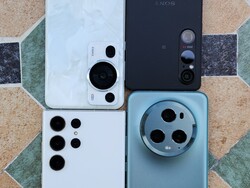
After taking a look at a wide range of flagship smartphones released in 2023 - you can find part 1 and part 2 of our camera tests here and here - it has become clear to us that all the high-end smartphones performed similarly well and we could at no point identify a clear overall winner. This can be said for the main cameras, in which personal preference should be the deciding factor for many potential buyers, as well as their zoom and ultra-wide angle lenses.
If you enjoy taking photos using your smartphone, then you will likely have a great time with all of our test candidates.
Samsung has definitely taken a step in the right direction with its big camera update - especially its 50-MPix mode has shown some improvements. Although, the Galaxy S23 Ultra really has to do more when it comes to its 4-to-1 pixel binning technology in order for its photos to have the same quality as those taken using the phone's "normal" 12.5-MPix mode. We also see some room for improvement when it comes to details and sharpness - the competition's main cameras have a lot more to offer at times. On the flip side, the Samsung flagship proves to be a good allrounder and generally performs competitively on every level - especially in low-light conditions.
In the past, low-light qualities used to be a big strength of Huawei's flagships. The P60 Pro does still achieve strong images at night with its RYYB sensor, but we can't say that the Huawei phone delivers any above-average results. In total, the P60 Pro doesn't have many weaknesses and every one of its installed lenses does a great job, without showing much of a difference compared to its high-end competitors.
We were positively surprised by the Xperia 1 V during our test. The Sony flagship captures subjects very naturally and contours aren't as artificially sharpened as on some of the other rivals. In addition, the phone features extensive software with lots of customization options - however, without an extra mode which offers you the chance to use its full resolution. Its ultra-wide angle camera does really well, too - although, in comparison to the Honor Magic5 Pro, it does feel a little more like a wide-angle lens.
The Honor flagship struggled a little bit with selfie shots compared to the competition, but apart from that, it can definitely keep up with the best of the best in the area of photography. If you can forgive the Magic5 Pro for not always having the best color accuracy, then this phone definitely offers a great total camera package.
Please note: Based on the findings from our camera tests, we have corrected the camera rating for the Samsung Galaxy S23 Ultra (in the single test) to be slightly lower, and have upgraded the rating for the Sony Xperia 1 V by a small amount.
Haven't found your perfect smartphone? But you're still on the hunt for a good camera phone? Then take a closer look at our list of the best camera smartphones. This article includes a regularly updated list of the 10 best camera phones taken from our reviews.


 Deutsch
Deutsch English
English Español
Español Français
Français Italiano
Italiano Nederlands
Nederlands Polski
Polski Português
Português Русский
Русский Türkçe
Türkçe Svenska
Svenska Chinese
Chinese Magyar
Magyar